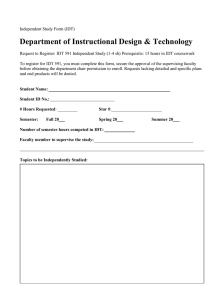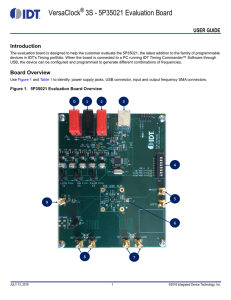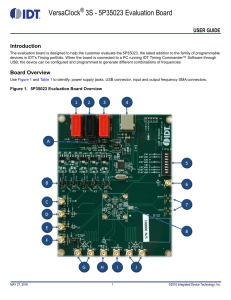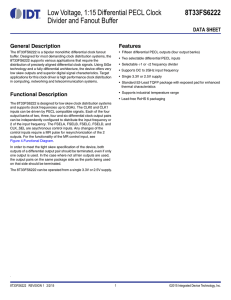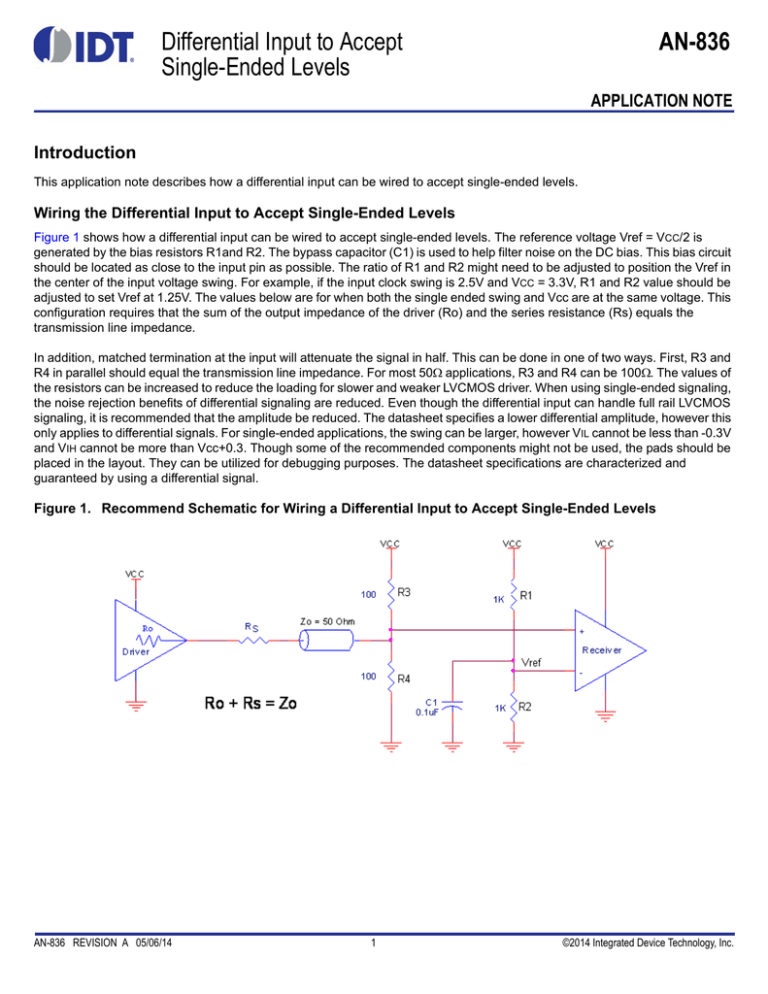
Differential Input to Accept
Single-Ended Levels
AN-836
APPLICATION NOTE
Introduction
This application note describes how a differential input can be wired to accept single-ended levels.
Wiring the Differential Input to Accept Single-Ended Levels
Figure 1 shows how a differential input can be wired to accept single-ended levels. The reference voltage Vref = VCC/2 is
generated by the bias resistors R1and R2. The bypass capacitor (C1) is used to help filter noise on the DC bias. This bias circuit
should be located as close to the input pin as possible. The ratio of R1 and R2 might need to be adjusted to position the Vref in
the center of the input voltage swing. For example, if the input clock swing is 2.5V and VCC = 3.3V, R1 and R2 value should be
adjusted to set Vref at 1.25V. The values below are for when both the single ended swing and Vcc are at the same voltage. This
configuration requires that the sum of the output impedance of the driver (Ro) and the series resistance (Rs) equals the
transmission line impedance.
In addition, matched termination at the input will attenuate the signal in half. This can be done in one of two ways. First, R3 and
R4 in parallel should equal the transmission line impedance. For most 50 applications, R3 and R4 can be 100. The values of
the resistors can be increased to reduce the loading for slower and weaker LVCMOS driver. When using single-ended signaling,
the noise rejection benefits of differential signaling are reduced. Even though the differential input can handle full rail LVCMOS
signaling, it is recommended that the amplitude be reduced. The datasheet specifies a lower differential amplitude, however this
only applies to differential signals. For single-ended applications, the swing can be larger, however VIL cannot be less than -0.3V
and VIH cannot be more than Vcc+0.3. Though some of the recommended components might not be used, the pads should be
placed in the layout. They can be utilized for debugging purposes. The datasheet specifications are characterized and
guaranteed by using a differential signal.
Figure 1. Recommend Schematic for Wiring a Differential Input to Accept Single-Ended Levels
AN-836 REVISION A 05/06/14
1
©2014 Integrated Device Technology, Inc.
Corporate Headquarters
Sales
Tech Support
6024 Silver Creek Valley Road
San Jose, CA 95138 USA
1-800-345-7015 or 408-284-8200
Fax: 408-284-2775
www.IDT.com
email: clocks@idt.com
DISCLAIMER Integrated Device Technology, Inc. (IDT) and its subsidiaries reserve the right to modify the products and/or specifications described herein at any time and at IDT’s sole discretion. All information in
this document, including descriptions of product features and performance, is subject to change without notice. Performance specifications and the operating parameters of the described products are determined
in the independent state and are not guaranteed to perform the same way when installed in customer products. The information contained herein is provided without representation or warranty of any kind, whether
express or implied, including, but not limited to, the suitability of IDT’s products for any particular purpose, an implied warranty of merchantability, or non-infringement of the intellectual property rights of others. This
document is presented only as a guide and does not convey any license under intellectual property rights of IDT or any third parties.
IDT’s products are not intended for use in applications involving extreme environmental conditions or in life support systems or similar devices where the failure or malfunction of an IDT product can be reasonably
expected to significantly affect the health or safety of users. Anyone using an IDT product in such a manner does so at their own risk, absent an express, written agreement by IDT.
Integrated Device Technology, IDT and the IDT logo are registered trademarks of IDT. Product specification subject to change without notice. Other trademarks and service marks used herein, including protected
names, logos and designs, are the property of IDT or their respective third party owners.
Copyright ©2014 Integrated Device Technology, Inc.. All rights reserved.

